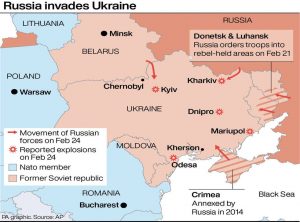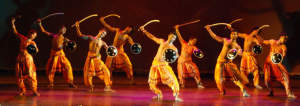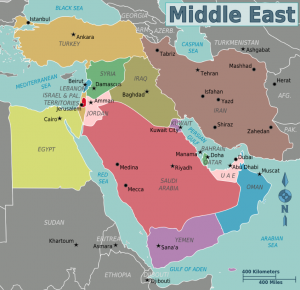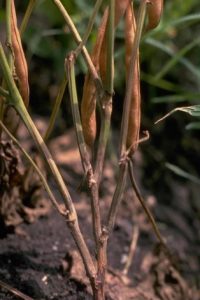THE INTERNATIONAL RELATIONS
1. THE RUSSIAN INVASION ON UKRAINE
THE CONTEXT: The Russian President approves ‘special military operation’ as Russia launches an invasion of Ukraine by land, air and sea. Also, the Russian actions have been widely condemned and raise several questions concerning violation of international law.
THE EXPLANATION:
Russia launched a full-scale invasion on Ukraine. Missiles rained down on Ukrainian cities. Ukraine reported columns of troops pouring across its borders into the eastern Chernihiv, Kharkiv and Luhansk regions, and landing by sea at the cities of Odesa and Mariupol in the south.
Russian troops attacked Ukraine from Belarus as well as Russia with Belarusian support, and an attack was also being launched from annexed Crimea, Ukraine’s border.
How is Russia violating the UN Charter?
The principle of non-intervention is enshrined in article 2(4) of the UN Charter. It requires states to refrain from using force or threat of using force against territorial integrity or political independence of any state. The Russian attack on Ukraine is violative of this principle, and amounts to aggression under international law. Russia’s desire to keep Ukraine out of NATO is a prime reason for its use of force against Ukraine.
- Russia has claimed it is acting in self-defence as Ukraine could acquire nuclear weapons with the help of its western allies. However, the International Court of Justice in the Legality of Threat of Nuclear Weapons case held that mere possession of nuclear weapons does not constitute a threat. Further, mere membership in a defence alliance like NATO can also not be considered a threat of aggression.
- The UN General Assembly Resolution 3314 (1974) defines aggression as the use of armed force by a state against the sovereignty, territorial integrity or political independence of another state. Additionally, allowing one’s territory to be used by another state for aggression against a third state, also qualifies as an act of aggression.
- Accordingly, Belarus can also be held responsible for aggression as it has allowed its territory to be used by Russia for attacking Ukraine. Aggression is also considered an international crime under customary international law and the Rome statute establishing the International Criminal Court.
Russia’s and the West’s interests in Ukraine:
- Ukraine and Russia share hundreds of years of cultural, linguistic and familial links. As part of the Soviet Union, Ukraine was the second-most powerful Soviet republic after Russia, and was crucial strategically, economically and culturally. Ever since Ukraine split from the Soviet Union, both Russia and the West have vied for greater influence in the country in order to keep the balance of power in the region in their favour.
- For the United States and the European Union, Ukraine is a crucial buffer between Russia and the West. As tensions with Russia rise, the US and the EU are increasingly determined to keep Ukraine away from Russian control.
- Efforts to induct Ukraine into NATO have been ongoing for many years and seems to have picked up pace recently. Russia has declared such a move a “red line”, with Moscow worried about the consequences of the US-led military alliances expanding right up to its doorstep.

What about the principle of self-defence?
In face of the use of force by Russia, Ukraine has the right to self-defence under international law. The UN Charter under article 51 authorisesa state to resort to individual or collective self-defence, until the Security Council take steps to ensure international peace and security. In this case, it seems implausible for the UNSC to arrive at a decision as Russia is a permanent member and has veto power. However, Ukraine has a right under international law to request assistance from other states in form of military assistance, supply of weapons etc.
On the other hand, Russia has also claimed that it is acting in self-defence. This claim is questionable, as there has been no use of force, or such threats against Russia by Ukraine. It has been claimed by Russia that Ukraine may acquire nuclear weapons with the help of western allies. However, the International Court of Justice (ICJ) in the Legality of Threat of Nuclear Weapons case held that mere possession of nuclear weapons does not necessarily constitute a threat.
Thus, even if Ukraine has, or were to acquire nuclear weapons in the future, it does not become a ground for invoking self-defence by Russia. Further, mere membership in a defence alliance such as NATO cannot necessarily be considered as a threat of aggression against Russia. Thus, here too Russia cannot invoke self-defence.
THE ENVIRONMENT AND ECOLOGY
2. PLEA AGAINST KERALA IN ENDOSULFAN CASE
THE CONTEXT: The Supreme Court issued notice on a petition seeking contempt action against Kerala for not disbursing ₹5 lakh each as compensation to the victims of endosulfan pesticide exposure.
THE EXPLANATION:
The bench stated that the State had not acted despite orders from the apex court in January 2017 and July 2019. The counsel for the petitioner said the State had taken “no steps for compliance”.
In January 2019, Kerala government had claimed that it had earmarked over ₹180 crore for payment of compensation to victims, some of whom were terminally-ill from the effects of the pesticide which was being aerially sprayed on cashew plantations adjoining habitats where the victims lived.
BACKGROUND:THE ENDOSULFAN TRAGEDY IN KERALA
What is Endosulfan?
- It is an organochlorine insecticide- a Persistent Organic Pollutant.
- It is used in Cashewnut, Coconut, Rubber Plantation (Bioaccumulant).
Endosulfan is a pesticide developed in 1954. People extensively used it in farming with high consumption in the 1980s and 1990s. Later, it was highly toxic to human health and the environment. It poisoned entire populations of useful and necessary insects. The Endosulfan tragedy also caused many ailments. These ailments included skin irritations, destruction of nerve tissues and reproductive and developmental damage in human beings and animals.
For over 20 years, cashew plantations in Kasargod district in Kerala used Endosulfan as a pesticide. Tea plantations, paddy and fruit orchards in other areas of Kerala also used this pesticide administered via aerial spraying or manual pumps. Prone to long-range atmospheric transport, Endosulfan linked to serious health disorders in the citizens residing in these areas.
The Ban of Endosulfan
The Kerala Government banned the use of Endosulfan in 2005. However, neighboring States still used them. In 2011, the seventh meeting of the Stockholm Convention on Persistent Organic Pollutants (POP’s) placed a global ban on the manufacture and use of Endosulfan. In the same year, the Supreme Court of India banned the use, manufacture and distribution of the pesticide. A Supreme Court-appointed panel recommended phasing out the use of Endosulfan across a period of two years to avoid the high cost of incinerating.
Relief and Remediation Program
Furthermore, in 2017, the Supreme Court of India directed the Kerala Government to pay Rupees 500 Crores to over 5,000 victims of the Endosulfan tragedy. It also directed it to set up a medical facility to treat ailments resulting from exposure to Endosulfan. Relief and remediation plans focus on health, socio-economic welfare, rehabilitation and empowerment as well as a periodic assessment of environmental effects.
3. CLIMATE CHANGE FAVOUR SOIL-BORNE PLANT PATHOGENS
THE CONTEXT: Indian Scientists have identified that high-temperature drought conditions and low soil moisture content are favourable conditions for dry root rot (DRR), a disease that damages the roots or girdles the trunk in chickpea. This work will be useful for the development of resistant lines and better management strategies.
THE EXPLANATION:
- The team which closely monitored the disease identified that high temperatures ranging between 30 to 35 degrees, drought conditions, and less than 60% soil moisture content are favorable conditions for dry root rot (DRR).

- The scientists explained that Macrophomina (soil-borne fungus) survives in a wide range of environmental conditions, even at extremes of temperature, soil pH, and moistures. In chickpea, DRR is highly prevalent during the flowering and podding stages coinciding with high temperature and drought conditions. They scientists are exploring ways to use the study for development of resistant lines and better management strategies.
- The team is also trying to address the disease favourable conditions identified from a molecular perspective. In a recent breakthrough in gene expression studies, scientists have identified a few promising chickpea genes encoding for enzymes like chitinase and endochitinase, which can provide some degree of defense against DRR infection.
- The team at ICRISAT, in collaboration with ICAR research institutes, has also adopted several multi-pronged approaches, including continuous surveillance, better detection techniques, development of forecast models, screening assays, etc., to fight against such deadly plant diseases.
| Value Addition:
The Dry root rot disease (DRR) causes reduced vigour, dull green leaf colour, poor new growth, and twig dieback. If extensive root damage occurs, the leaves suddenly wilt and dry on the tree. The increasing global average temperature is leading to appearance of many new plant disease-causing pathogens at a rate hitherto unheard of, one of them being Macrophominaphaseolina, a soil-borne necrotrophic that causes root rot in chickpea. Currently, the central and southern states of India have been identified as the prime chickpea DRR hotspots with an overall 5 – 35% disease incidence. |
THE GOVERNMENT SCHEMES/INITIATIVES IN NEWS
4. PM KISAN SAMMAN NIDHI YOJANA: CELEBRATION OF 3RD ANNIVERSARY
THE CONTEXT: PM-KISAN is a central sector scheme launched on 24thFebruary, 2019 to supplement financial needs of land holding farmers. Financial benefit of Rs 6000/- per year in three equal installments, every four month is transferred into the bank accounts of farmers’ families across the country through Direct Benefit Transfer (DBT) mode.
THE EXPLANATION:
The scheme was initially meant for small and marginal farmers (SMFs) having landholding upto 2 hectares but scope of the scheme was extended to cover all landholding farmers.
As of now, the benefits under PM Kisan scheme have been provided to about 11.78 Crore farmers and funds amounting to Rs1.82 lakh crore in various instalments have been released to the eligible beneficiaries of this scheme across India. Out of which Rs. 1.29 lakh crore has been released during the current Covid 19 pandemic period.
VALUE ADDITION:
ABOUT PM-KISAN SCHEME
- PM Kisan is a Central Sector scheme with 100% funding from Government of India.
- Under the scheme an income support of 6,000/- per year in three equal installments will be provided to all land holding farmer families.
- State Government and UT administration will identify the farmer families which are eligible for support as per scheme guidelines.
- The fund will be directly transferred to the bank accounts of the beneficiaries.
- There are various Exclusion Categories for the scheme.
Scheme Exclusion
The following categories of beneificiaries of higher economic status shall not be ligible for benefit under the scheme.
- All Institutional Land holders.
- Farmer families which belong to one or more of the following categories:
- Former and present holders of constitutional posts.
- Former and present Ministers/ State Ministers and former/present Members of LokSabha/ RajyaSabha/ State Legislative Assemblies/ State Legislative Councils,former and present Mayors of Municipal Corporations, former and present Chairpersons of District Panchayats.
- All serving or retired officers and employees of Central/ State Government Ministries /Offices/Departments and its field units Central or State PSEs and Attached offices /Autonomous Institutions under Government as well as regular employees of the Local Bodies (Excluding Multi Tasking Staff /Class IV/Group D employees).
- All superannuated/retired pensioners whose monthly pension is Rs.10,000/-or more (Excluding Multi Tasking Staff / Class IV/Group D employees) of above category.
- All Persons who paid Income Tax in last assessment year.
- Professionals like Doctors, Engineers, Lawyers, Chartered Accountants, and Architects registered with Professional bodies and carrying out profession by undertaking practices.
5. ASI’S UNDERWATER EXPLORATIONS IN FOUR STATES
THE CONTEXT: According to the Ministry of Culture,the underwater wing of the Archaeological Survey of India (ASI) is being revived for explorations in four states with a significant coastline.
THE EXPLANATION:
According to the officials, Over the next few months, several projects will be readied for excavations in0020Dwarka (Gujarat), several mythological sites in the Cauvery delta (Tamil Nadu), and sites along the coast in Maharashtra and Odisha.
Even as the ASI had established its underwater wing in 2001, it has remained defunct for more than a decade, mostly owing to lack of experts at the helm. In fact, several underwater excavations had to be abandoned in the past, including an offshore exploration in Tamil Nadu’s Poompuhar between 1981 and early 2000s to unravel the 2000-year-old port of Kaveripattinam. According to officials further surveys could reveal more facts about the ancient port city, which reportedly had trade links with the Roman empire and China.
Value Addition:
About Archaeological Survey of India
The Archaeological Survey of India (ASI) is an attached office in the Ministry of Culture. It was set up in 1861 with the primary object of surveying antiquarian remains in this country and their study. ASI’s function is to “explore, excavate, conserve, preserve and protect the monuments and sites of National & International Importance.”
Its main functions are:
- preservation, conservation and environmental development of centrally protected monuments and sites, including World Heritage Monuments and antiquities
- maintenance of gardens & development of new gardens surrounding centrally protected monuments and sites
- exploration and excavation of ancient sites
- specialized study of inscription and various phases of Indian architecture
- maintenance of Archaeological site Museums
- Operation of the Antiquities and Art Treasures Act
- Research and Training in different areas of Archaeology
| QUICK FACTS:
· ASI is the successor of The Asiatic Society of India. It was founded in its current form in 1861 by Sir Alexander Cunningham with the help of the then Viceroy Canning. · It regulates all the archaeological activities in the country as per the provisions of the Ancient Monuments and Archaeological Sites and Remains Act, 1958 and the Antiquities and Art Treasure Act, 1972. · According to the Ancient Monuments and Archaeological Sites and Remains Act, 1958, there is a ban on construction within 100 metres of a centrally protected monument and regulated construction within 100-200 metres. |
THE PT PERSPECTIVE
6.“EXERCISE MILAN 2022”
THE CONTEXT: The Navy’s Milan 2022 will begin in Vishakhapatnam, the largest-ever edition of the exercise that will see the participation of 40 countries, including all major navies of the world.
THE EXPLANATION:
- This year theme is ‘Camaraderie – Cohesion – Collaboration’ which “aims to project India as a responsible maritime power to the world at large”.
- The aim of the exercise is to hone operational skills, imbibe best practices and procedures, and enable doctrinal learning in the maritime domain, through professional interaction between friendly navies. The exercise would be larger in “scope and complexity” with a focus on “exercises at sea including exercises in surface, sub-surface and air domains and weapon firing.
- The biennial exercise, being conducted after four years, will last nine days with the harbour phase starting and the sea phase on March 1, 2022.The 2020 edition of the exercise had been cancelled due to the Covid-19 pandemic.
Background:
A multilateral exercise, Milan began in 1995 with the participation of only four countries – Indonesia, Singapore, Sri Lanka and Thailand. Until now, it was held at the Andaman and Nicobar Command, but given the large number of participants this time, it was shifted to the Eastern Naval Command, which offers larger sea room.
7. MAYURBHANJ CHHAU DANCE: ODISHA
- There are three recognized styles of Chhau: Seraikella from the state of Jharkhand, Purulia from West Bengal, and Mayurbhanj from Odisha. It is a semi-classical Indian dance with martial, tribal, and folk traditions, with origins in one belt of eastern India.
- The one stark difference being that Mayurbhanj does not use the elaborate masks adorned by dances from Seraikella and Purulia. The dance ranges from celebrating martial arts, acrobatics, and athletics performed in festive themes of folk dance, to a structured dance with religious themes found in Shaivism, Shaktism, and Vaishnavism such as the characters portrayed in the dance are of Gods and Goddesses and sometimes animals.
- The dance technique is based on chaalis and topkas—stylised walks choreographed after a keen observation of nature, e.g.baaghchaali (tiger walk), mayoorchaali (peacock walk), khel—variations of swordplay, and ufli—thirty-six movements describing everyday activities.

THE PRELIMS PRACTICE QUESTIONS
QUESTION OF THE DAY 25th FEBRUARY 2022
Q. Consider the following statements about Chhau dance form:
- It is popular in Chota Nagpur Plateau region.
- Mask is defining feature of Chhau dance.
- Only male members participate in Chhau dance.
Which of the statements given above is/are correct?
a) 1 only
b) 1 and 2
c) 2 and 3
d) All of them
ANSWER FOR 24th FEBRUARY 2022
Answer: B
Explanation:
Please refer to the given map-



